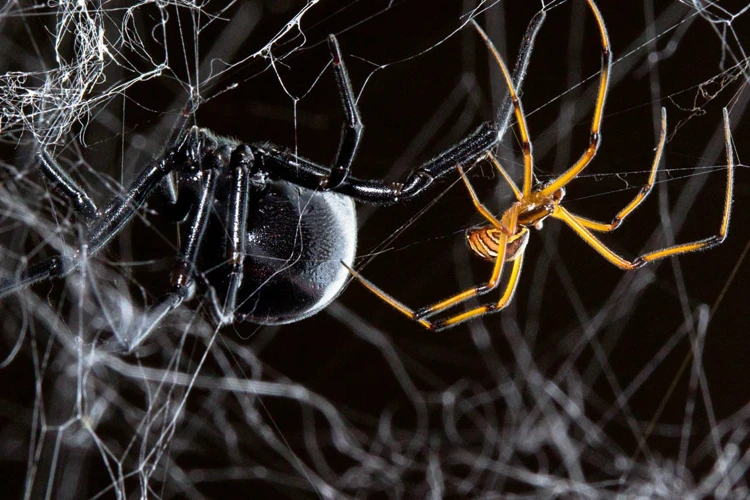The cycle of life is fascinating, and the world of spiders is no exception. Among them, black widow spiders stand out, known for their venomous bites and distinct markings. However, there is more to these arachnids than their reputation as dangerous predators. The mating process of black widow spiders and its importance in their life cycle is an intriguing subject worth exploring. From courtship behavior to genetic diversity, male sacrifice to cannibalism, the world of black widow spider mating is full of mysteries. Join me as we delve into the fascinating and complex world of the importance of mating in the life cycle of black widow spiders.
The Mating Process of Black Widow Spiders
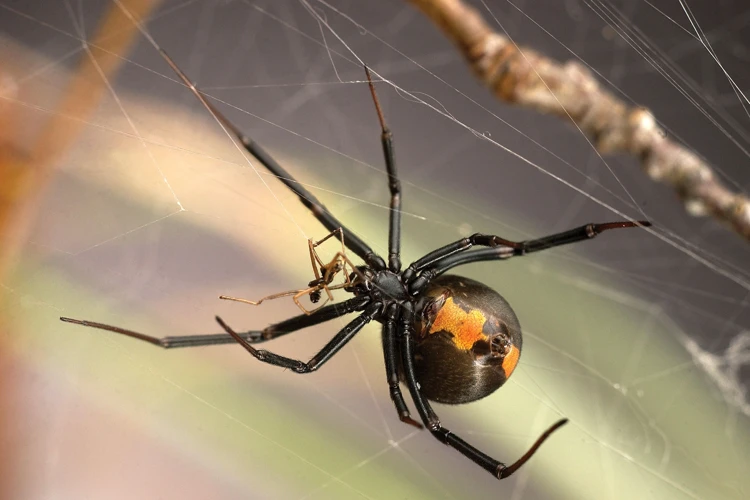
The reproductive process of black widow spiders is a fascinating subject to explore. One cannot help but be perplexed by the complexity and importance of the role that mating plays in the life cycle of these arachnids. From courtship rituals and copulation to the challenges faced by males during the process, there is much to be learned about black widow spider mating. Let’s delve into the intricacies of this process and discover the physiological changes that occur, as well as the strategies and behaviors exhibited by both male and female spiders. Check out our article for more information on the anatomy of the black widow reproductive system, mating competition, cannibalism, and more.
1. Courtship Behavior
Courtship behavior in black widow spiders is the initial step in the mating process, where the male spider must approach the female and convince her to mate with him. This process requires careful planning and execution, as the male spider needs to avoid being labelled as prey by the female. The courtship process of black widow spiders involves several steps, as shown in the table below:
| Step | Description |
|---|---|
| Step 1: | The male spider approaches the female cautiously. |
| Step 2: | The male spider vibrates his web and flicks his legs to send a message to the female spider, indicating that he is not prey. |
| Step 3: | The male spider then taps gently on the female’s web while initiating more intense vibrations and movements. |
| Step 4: | The male spider approaches the female, attempting to insert his pedipalps into the female’s genital opening. |
| Step 5: | If the female accepts the male’s attempt at copulation, they will mate and the male will deposit his sperm into the female’s spermathecae. |
During the courtship process, female black widows are known to be highly selective when choosing a mate. They tend to prefer males who are larger and who have more intense courtship displays. The female’s selectivity is believed to play a significant role in maintaining genetic diversity within the population, which is essential for the adaptation of these spiders to changing environments.
It is worth noting that certain factors affect the courtship behavior in these spiders, such as environmental changes and the physiological changes that occur during the spider’s life cycle. For example, mature females tend to be less receptive to courtship behavior than younger females. More information about the physiological changes during mating in black widow spiders can be found here.
Courtship behavior is a crucial step in the mating process of black widow spiders, as it determines the male’s success in mating and contributes to the genetic diversity of the population. However, courtship behavior is not without risks, and male spiders must be cautious when approaching the female spider to avoid being preyed upon. More information about the risks and challenges of mating for male black widow spiders can be found here.
2. Copulation
During copulation, the male black widow spider approaches the female with caution to avoid being mistaken for prey and eaten. Once he has approached without being attacked, he injects a small amount of semen into the female’s reproductive opening using his pedipalps. The pedipalps are modified appendages located near the spider’s mouth that are used to transfer sperm to the female. It is not uncommon for the male spider to insert both pedipalps into the female’s reproductive opening to increase the chances of fertilization.
The copulation process can last as long as several hours, during which time the male spider needs to make a quick escape to avoid being eaten by the female. Once the mating has been successful, the female begins producing eggs that are fertilized by the male’s sperm. This is the point in the black widow spider’s life cycle where mating becomes crucial for reproduction.
Interestingly enough, black widow spiders have a form of sexual cannibalism where males are often eaten by the female after mating. This may be due to the female’s need for nutrition to support her developing eggs. As a result, males have developed several mating strategies, including sacrificing themselves for the sake of reproduction, to increase their chances of survival.
Copulation in black widow spiders is a brief but important process that allows for successful reproduction and egg production. However, it also comes with risks, including the potential for the male to be eaten by the female. Males have developed strategies to increase their chances of reproduction and survival, while females benefit from the extra nutrition gained from consuming the male.
The Significance of Mating in the Life Cycle of Black Widow Spiders
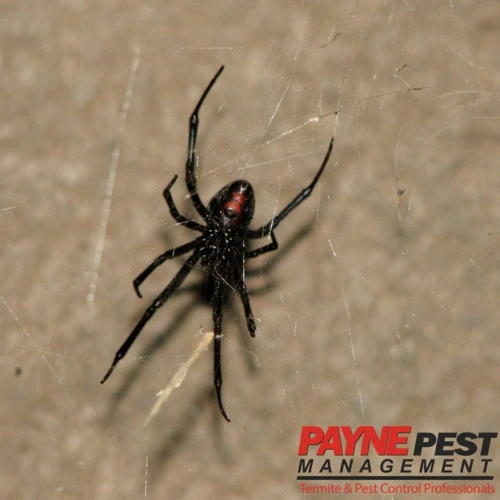
The mating process of black widow spiders is no ordinary courtship, as evidenced by their complex mating behaviors and often fatal consequences for the males. However, the significance of mating in the life cycle of black widow spiders cannot be overstated. Mating is crucial for the continuation of the species, as it leads to reproduction and egg production, increased lifespan, and better protection for offspring. In this section, we will discuss the importance of mating in the life cycle of black widow spiders, exploring the benefits that they gain from this process. For more information on mating in black widow spiders, you can check the frequency of black widow mating in the wild, mating strategies, mating in captivity, as well as the role of male black widow spiders in mating and the risk they face such as cannibalism by females.
1. Reproduction and Egg Production
Reproduction is the main reason why mating is crucial for female black widow spiders, as it allows them to produce and lay eggs. After mating, the female spider sets out to create her egg sac, which can contain up to 900 eggs in some species. The eggs are laid within a few days of each other and are protected by a silken cocoon spun around them by the female spider.
The eggs are incubated for several weeks and, when they hatch, the spiderlings emerge. Without the genetic contribution of the male spider, however, the eggs would not be fertilized and wouldn’t hatch. This is where the importance of mating comes into play.
Successful mating allows female black widow spiders to produce healthy offspring and ensure the continuity of their species. It also allows the female to ensure genetic diversity in the spider population, which is important for their survival as a species. This is because genetic diversity helps them better adapt to changes in their environment and build resistance to diseases.
For black widow spiders, egg production and laying is a strenuous process that requires significant nutritional resources. The female requires sufficient and balanced nutrition to produce and lay healthy eggs. This highlights the importance of a stable environment for black widow spiders, especially for females. Otherwise, they may not be able to reproduce and lay fertile eggs.
Reproduction and egg production are significant reasons why mating is an essential aspect of the life cycle of black widow spiders. By mating with males of their species, female black widow spiders can ensure successful reproduction, which contributes to the survival and health of the spider population. To learn more about black widow spider mating strategies, follow this link.
2. Increased Lifespan
Female black widow spiders who mate have shown to have a longer lifespan compared to those who do not. According to research, the lifespan of female black widows who have mated can be extended up to 84 days. This is significantly longer than the lifespan of non-mated females, which is only 28 days on average.
The increased lifespan is believed to be caused by:
| 1. | Higher energy reserves – Female black widows need to produce and lay eggs, which requires a lot of energy. Mating provides them with the opportunity to obtain more food from the male, increasing their energy reserves and hence their lifespan. |
| 2. | Less time spent searching for a mate – Female black widows have a very short lifespan, and spending time searching for a mate can use up a significant amount of their time and energy. Mating provides them with a partner relatively quickly, reducing the amount of time and energy spent on searching and increasing their chances of survival. |
| 3. | Reduction of stress levels – Female black widows are naturally aggressive and solitary creatures, which can result in high stress levels. Mating provides them with a partner, reducing their stress levels and increasing their lifespan as a result. |
This increased lifespan is beneficial for both the female and any potential offspring. It allows females to produce and care for greater numbers of offspring and, in turn, increase the chances of the survival of the species as a whole.
3. Better Protection for Offspring
Female Black Widow Spiders provide better protection for their offspring after mating. When a female Black Widow mates, she stores sperm from the male in a specialized organ called the spermathecae. The sperm stays viable for several weeks and allows the female to fertilize multiple batches of eggs without mating again.
One way that female Black Widows protect their offspring is by creating egg sacs. After mating, a female Black Widow will spin a silk cocoon for her eggs, on average containing around 100-400 eggs each. Some females will produce as many as 12 egg sacs in a lifetime. The silk cocoon is designed to protect the developing spiderlings inside from predators and harsh environmental conditions.
Female Black Widow Spiders also provide care for their offspring after hatching. Spiderlings take food from their environment, but the mother will sometimes offer assistance by regurgitating food for her offspring. This behavior is particularly important for the survival of the spiderlings because it allows them to conserve energy that would otherwise be spent hunting for food.
Another way in which female Black Widows protect their offspring is through aggressive behavior against potential predators. Female Black Widows are ferocious defenders of their egg sacs and spiderlings, and they will not hesitate to attack anything that they perceive as a threat. This includes animals much larger than themselves, such as birds or mammals.
The mating process of Black Widow Spiders has a significant impact on the protection of their offspring. The creation of silk egg sacs and the maternal care offered by female Black Widows ultimately lead to the survival of spiderlings in a harsh and competitive environment.
The Role of Male Black Widow Spiders in Mating
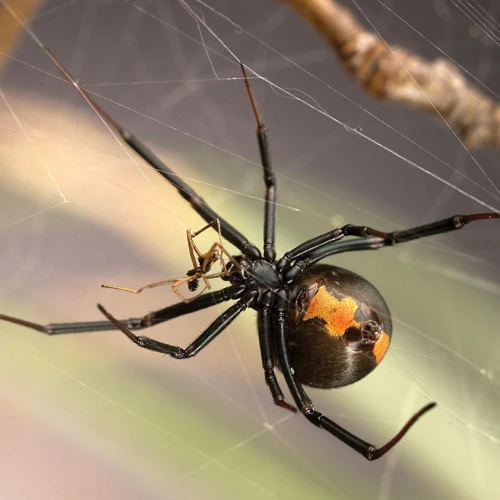
When it comes to mating in black widow spiders, the role of male spiders is often overlooked. Yet, the male black widow spider plays a crucial role in the mating process, and their contributions are just as important as those of the female. In fact, male black widow spiders are known to make some of the greatest sacrifices in the animal kingdom to ensure reproduction. In this section, we’ll explore the critical role that male black widow spiders play in mating and reproduction, as well as the risks and challenges they face in doing so. So, let’s delve deeper and uncover the fascinating world of male black widow spiders and their mating strategies.
1. Sacrificing Themselves for Mating
It is well-known that male Black widow spiders often sacrifice themselves for the sake of mating. This phenomenon is not uncommon in the animal kingdom, but it is particularly notable in this species. The process of mating for Black widows can be dangerous and often ends with the female killing and eating the male. However, this does not deter male Black widows from performing their duty.
What does sacrificing themselves for mating entail?
Male Black widows know the risks involved in mating but must do so to pass on their genes. During copulation, the male carefully approaches the female, making sure not to be mistaken for prey. He then uses his pedipalps to transfer sperm into the female’s reproductive organs. This process is not without danger. The female can easily turn on the male and eat him. Despite this risk, male Black widows still mate. This sacrifice is necessary for the survival of the species.
Why is sacrificing themselves for mating important?
Sacrificing themselves for mating helps ensure the continuation of the species. It also increases genetic diversity, which is necessary for the Black widow spider population to adapt to environmental changes and build resistance to diseases. Male Black widows are aware of the risks involved and proceed with caution, but they still put themselves in harm’s way to guarantee their legacy.
What are the consequences of sacrificing themselves for mating?
The consequences of sacrificing themselves for mating are clear. The male Black widow risks his life for a chance to pass on his genes and help ensure the survival of the species. It may seem counterintuitive to risk one’s life for the sake of reproduction, but it is a sacrifice that nature requires. Ultimately, the male’s legacy lives on through his offspring.
Sacrificing themselves for mating is a critical aspect of the life cycle of male Black widow spiders. Their bravery and willingness to put themselves in harm’s way help ensure the continuation of the species. This act is not to be taken lightly, and it highlights the importance of reproduction in nature. Without reproduction, species would cease to exist, and the world would be a much different place.
2. Other Contributions to Mating and Reproduction
Male black widow spiders play a crucial role in the mating and reproduction of the species beyond just fertilizing the female’s eggs. Here are some of the other significant contributions made by male black widow spiders:
- Providing Sperm to Multiple Females: Male black widow spiders are capable of mating with multiple females, increasing their chances of passing on their genes. This behavior is known as polygyny, and it is common among many spider species.
- Producing Pheromones: Male black widow spiders also produce pheromones, chemical signals that attract female spiders and signal their readiness to mate. These pheromones are released through specialized glands located on the male’s pedipalps, which are the appendages near their mouths. The pheromones provide an important means of communication between the male and female spiders during courtship.
- Building Sperm Webs: Male black widow spiders construct webs for depositing their sperm. These “sperm webs” allow them to transfer their sperm to females more easily and efficiently and increase their chances of successful fertilization.
- Providing Nutrients to Females: During copulation, male black widow spiders provide nutrients to the female that are essential for egg production and the survival of their offspring. These nutrients are stored in a specialized organ called the “mating plug,” which the male deposits in the female’s reproductive tract after mating.
These contributions by male black widow spiders highlight the importance of their role in the mating and reproduction of the species. These behaviors are essential for ensuring that offspring are produced efficiently, and that the species is able to adapt and survive in its environment.
The Importance of Genetic Diversity in the Black Widow Spider Population
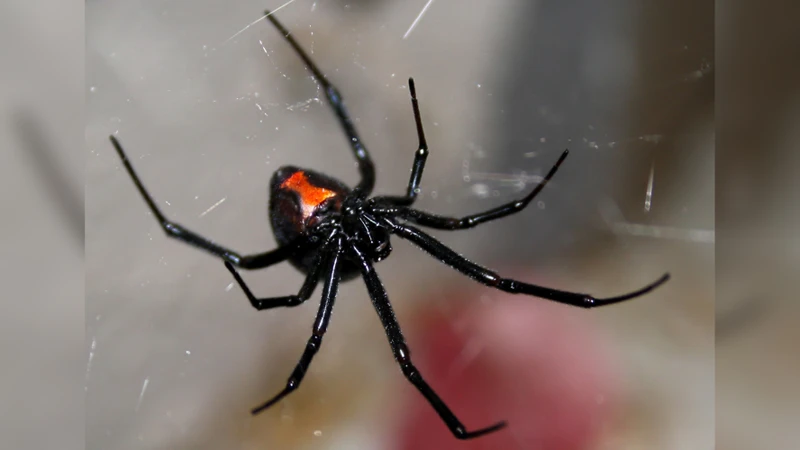
Genetic diversity is one of the most crucial factors contributing to the survival and growth of any biological population. The same rule applies to black widow spiders as well. It is imperative to understand that black widow spider populations require a diverse gene pool for sustainable growth. Though mating is the fundamental process that leads to genetic variety, inbreeding can cause a lack of genetic diversity and, consequently, lower vitality. In this section, we will discuss the importance of genetic diversity in the black widow spider population and the advantages it provides for their survival.
1. Avoiding Inbreeding
Black widow spiders are known for their unique mating behavior, which is crucial for maintaining the diversity of their population. One of the most important reasons why mating is essential for these spiders is to avoid inbreeding and promote genetic diversity within their population.
1. Gene Pool – Inbreeding can lead to a decrease in genetic diversity, which can negatively affect the survival and adaptation of species to changes in the environment. When organisms mate with closely related individuals, there is a higher chance of inherited diseases and defects in offspring.
2. Fitness – Inbreeding depression, a phenomenon where inbred offspring have reduced fitness compared to non-inbred offspring, can also result from inbreeding. Black widow spiders, like many other species, rely on genetic diversity to maintain their populations’ fitness and avoid long-term evolutionary disadvantages.
To avoid inbreeding, black widow spiders have evolved various strategies. For instance, males are known to use pheromones released by females to detect whether the potential mate is related. This mechanism helps to prevent mating with sisters or other closely related females.
Another strategy is mate choice, where the spiders prefer to mate with genetically diverse partners from different colonies. This preference for outbreeding helps to maintain the genetic diversity of the population by adding new traits to the gene pool.
Maintaining genetic diversity is essential for the survival of black widow spiders and other species, and avoiding inbreeding is crucial to achieving this goal. By preventing inbreeding, black widow spiders can maintain a healthy gene pool and increase their population’s fitness, ensuring their survival in the ever-changing environment.
2. Better Adaptation to Environmental Changes
With the increasing impact of climate change on the environment, the ability of species to adapt to new and challenging conditions is becoming increasingly crucial for their survival. Black widow spiders are no exception to this. Mating plays an important role in enhancing the genetic diversity of their population, which in turn helps these spiders adapt better to environmental changes. Here are some ways in which mating leads to better adaptation to environmental changes:
– **Introduction of new genetic material:** Mating allows for the mixing of genetic material from different individuals, which introduces new genetic variations to the population. This genetic variability increases the chances of the population having individuals that are better suited for changes in their environment.
– **Enhancement of genetic fitness:** By selecting mates that possess desirable traits, such as increased resistance to environmental stressors, black widow spiders can enhance their genetic fitness. Offspring produced from such mating will be better adapted to their environment and more likely to survive and reproduce.
– **Creation of hybrids:** In some cases, black widow spiders may mate with members of related species or subspecies. This can lead to the creation of hybrid offspring, which may have unique adaptive traits that enable them to survive and thrive in newly emerging environmental conditions.
It is worth noting, however, that genetic diversity alone is not enough to ensure adaptation to environmental changes. Other factors such as the rate and magnitude of environmental changes and the ability of the population to migrate or evolve in response to changes are also critical. Nonetheless, mating and the resulting genetic diversity certainly play an important role in enhancing the adaptability of black widow spider populations, and attention should be paid to preserving and enhancing these mechanisms to ensure their continued survival.
3. Building Resistance to Diseases
One of the lesser-known benefits of mating in the life cycle of black widow spiders is the role it plays in building resistance to diseases. In order for any species to survive, it is essential that its members possess a certain degree of genetic diversity as well as the ability to adapt to changing environmental conditions.
When it comes to the black widow spider population, the more genetically diverse the spiders are, the better able they are to fight off diseases and maintain their overall health. This is because genetic diversity allows for a greater likelihood of natural resistance to certain pathogens and parasites.
In fact, studies have shown that black widow spider populations with greater genetic diversity have a better chance of resisting infections and diseases in comparison to those with lower genetic variability. This makes the role of mating in the life cycle of black widows even more important, as it contributes to the overall genetic diversity of the population.
Enhancing genetic diversity can also help black widow spider populations adapt to environmental changes. Natural selection favors individuals with traits that are advantageous in specific environments, and genetic diversity allows for the existence of a broader range of traits within the population. By increasing the genetic diversity through mating, black widow spiders can ensure that they have a better chance of surviving environmental changes such as climate shifts or habitat modifications caused by human activity.
Here is a table highlighting some of the benefits of genetic diversity in black widow spider populations:
| Benefits of Genetic Diversity in Black Widow Spiders |
|---|
| Increased likelihood of natural resistance to pathogens and parasites |
| Better adaptation to environmental changes |
| Enhanced ability to fight off infections and diseases |
| Lower risk of extinction due to changes in environment or climate |
Genetic diversity is one of the key benefits of mating in the life cycle of black widow spiders. Through mating, black widows can ensure that their population is more resilient and better able to fight off diseases and cope with environmental changes. Thus, it is necessary to understand the importance of mating in the life cycle of black widow spiders, not only for reproduction and egg production but also for the overall health of the entire population.
The Risks and Challenges of Mating for Male Black Widow Spiders
As with most species, the mating process for black widow spiders is not without its risks and challenges. However, for male black widow spiders, these risks can be particularly perilous. The male’s sole purpose in life is to mate with as many females as possible, and in doing so, they face intense competition and the constant threat of cannibalism from their partners. Let’s take a closer look at the unique challenges that male black widow spiders face during the mating process.
1. Competition with Other Males
When it comes to mating, male black widow spiders face stiff competition from other males in the vicinity. The competition is intense and often leads to intense fights between the males. The goal is to establish dominance and gain the opportunity to mate with the female black widow spider. Competition among males is fierce and often leads to physical fights, where only the strongest and most resilient males survive.
Male black widow spiders display a range of unique characteristics that help them establish dominance over other males. For example, they can use pheromones to determine which male they need to fight or avoid. Additionally, they may have a larger body size and venomous fangs that can injure or kill opponents. Ultimately, the male that displays the most dominant behavior and/or manages to disable the other male will be selected as the mate.
While competition is necessary to ensure that the strongest and most resilient males get the chance to mate, it comes at a cost. Many male spiders die during competition, and those that manage to survive often suffer injuries that affect their quality of life and ability to hunt and mate in the future. It is important to note, however, that competition has an essential role in maintaining genetic diversity within populations. The strongest and most adaptive males will pass on their genes to the next generation, which is important for the sustainability of the population.
Male black widow spiders face a considerable amount of competition when it comes to mating. Competition is necessary for ensuring that the strongest and most adaptive males mate, but it comes at a high cost in terms of injuries and mortality rates. Ultimately, only the fittest male spiders will survive to mate.
2. Avoiding Cannibalism from Females
Male black widow spiders face a significant risk of being consumed by females during copulation. In fact, it is not uncommon for the female to kill and eat the male during or after mating. This behavior is believed to have evolved as a way for females to acquire additional nutrients needed for egg production. However, males have developed several strategies to avoid becoming prey themselves.
1. Quick Mating
One tactic used by male black widow spiders is to complete copulation as quickly as possible. By releasing their sperm and fleeing immediately, males reduce the chances of being attacked and consumed by the female.
2. Courtship Behavior
Another strategy is to engage in courtship behavior with females before approaching them for mating. This gives males a chance to evaluate the female’s receptiveness and mood, decreasing the chances of being attacked.
3. Offering Gifts
Male black widow spiders may also offer gifts to females, such as insects or silk, during courtship and copulation. This behavior may reduce the female’s aggression towards the male, increasing his chances of surviving the encounter.
4. Securing Safe Positioning
Male black widow spiders may also secure a safe position during copulation, such as positioning themselves behind the female or binding her legs with silk. This reduces the female’s ability to attack and consume the male.
Despite these strategies, the risk of cannibalism remains high for male black widow spiders during mating. This risk is even greater for young or inexperienced males who may not have learned these tactics yet. Ultimately, successful mating and reproduction require males to navigate this dangerous terrain with precision and caution.
Conclusion
In conclusion, the mating process of black widow spiders plays a crucial role in their life cycle. The intricate courtship behavior and copulation mechanisms ensure successful reproduction and egg production. Mating also contributes to a longer lifespan and better protection for offspring, making it essential for the survival of the species.
Male black widow spiders play a significant role in the mating process, where they either sacrifice themselves or assist with copulation and reproduction. By contributing genetically diverse traits, male black widow spiders aid in the avoidance of inbreeding and better adaptation to environmental changes, ultimately helping the species build resistance to diseases.
However, the risks and challenges of mating for male black widow spiders cannot be understated. The competition with other males for the female’s attention and avoiding cannibalism from females are significant threats that males must face during the mating process.
Despite the obstacles, the importance of mating in the life cycle of black widow spiders cannot be denied. The species relies heavily on successful mating and reproduction to ensure its survival in the ever-changing environment. Therefore, it is essential to understand and appreciate the significance of these processes and strive towards the preservation of the black widow spider population.
Frequently Asked Questions
Why is mating important in the life cycle of black widow spiders?
Mating is important for black widow spiders as it allows them to reproduce and produce offspring, increasing the chances of their survival and passing on their genes.
How do male black widow spiders contribute to mating and reproduction?
Male black widow spiders contribute to mating and reproduction by sacrificing themselves for mating and helping to protect and care for offspring once they are born.
What is courtship behavior in black widow spiders?
Courtship behavior in black widow spiders involves the male approaching the female and performing a series of movements, vibrations, and pheromone releases to show his intentions and convince the female to mate with him.
How does copulation occur in black widow spiders?
Copulation in black widow spiders occurs with the male inserting his pedipalps into the female’s genital opening and transferring sperm to fertilize her eggs.
Why is genetic diversity important in the black widow spider population?
Genetic diversity is important in the black widow spider population as it allows for better adaptation to environmental changes and building resistance to diseases, as well as avoiding inbreeding.
What risks do male black widow spiders face during mating?
Male black widow spiders face risks such as competition with other males for mating opportunities and avoiding cannibalism from females who may see them as a potential food source.
What is the significance of reproduction and egg production in black widow spiders?
Reproduction and egg production are significant in black widow spiders as they ensure the continuation of the species and increase the chances of offspring survival.
How does mating contribute to the longevity of female black widow spiders?
Mating contributes to the longevity of female black widow spiders by increasing their lifespan and providing them with protection for their offspring.
What role do male black widow spiders play in protecting offspring?
Male black widow spiders play a role in protecting offspring by guarding the egg sac and helping to feed and care for the young once they hatch.
What can be done to prevent inbreeding in black widow spiders?
To prevent inbreeding in black widow spiders, efforts can be made to introduce new and genetically diverse spiders into existing populations, as well as encouraging spiders to mate with spiders from other populations.

